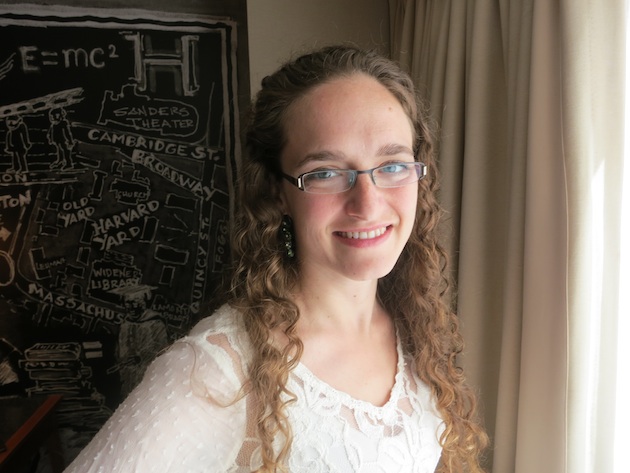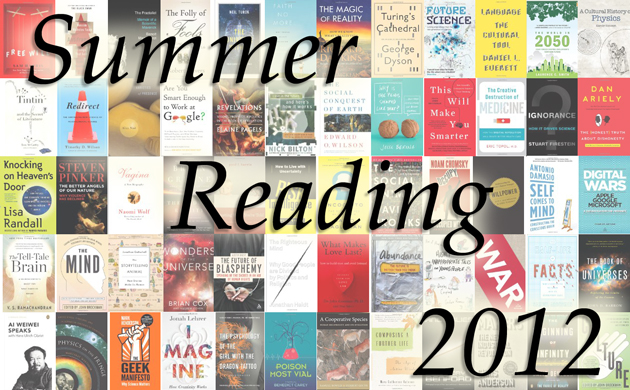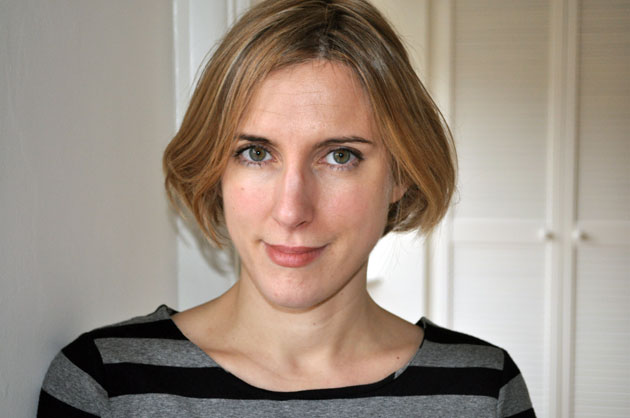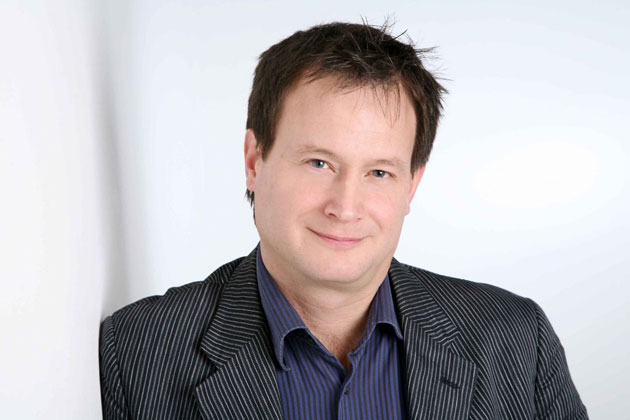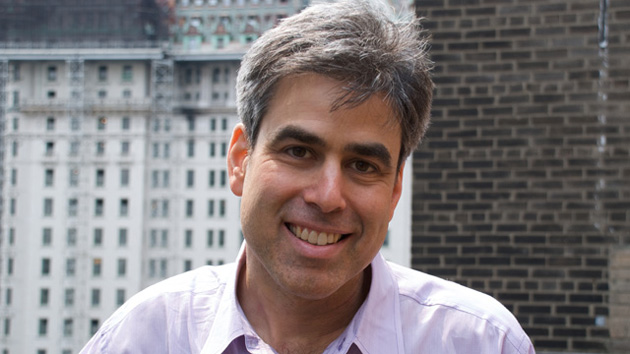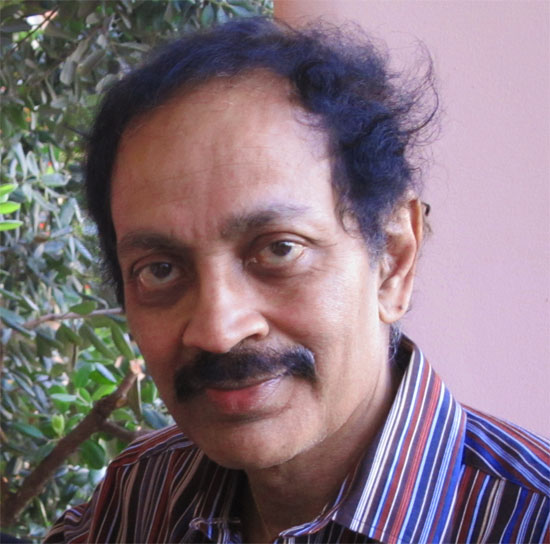In July, 2010, Edge ran a seminar entitled "A NEW SCIENCE OF MORALITY" which was introduced with the following paragraph:
Something radically new is in the air: new ways of understanding physical systems, new ways of thinking about thinking that call into question many of our basic assumptions. A realistic biology of the mind, advances in evolutionary biology, physics, information technology, genetics, neurobiology, psychology, engineering, the chemistry of materials: all are questions of critical importance with respect to what it means to be human. For the first time, we have the tools and the will to undertake the scientific study of human nature.
The driving force behind the conference was University of Virginia social psychologist Jonathan Haidt, author of The Happinesss Hypothesis and the recently-published The Righteous Mind, whose research indicates that morality is a social construction which has evolved out of raw materials provided by five (or more) innate "psychological" foundations: Harm, Fairness, Ingroup, Authority, and Purity. Highly educated liberals generally rely upon and endorse only the first two foundations, whereas people who are more conservative, more religious, or of lower social class usually rely upon and endorse all five foundations.
In his talk at 'THE NEW SCIENCE OF MORALITY" , he said:
I've been arguing for the last few years that we've got to expand our conception of the moral domain, that it includes multiple moral foundations, not just sugar and salt, and not just harm and fairness, but a lot more as well. So, with Craig Joseph and Jesse Graham and Brian Nosek, I've developed a theory called Moral Foundations Theory, which draws heavily on the anthropological insights of Richard Shweder.
Down here, I've just listed a very brief summary of it. That the five most important taste receptors of the moral mind are the following…care/harm, fairness/cheating, group loyalty and betrayal, authority and subversion, sanctity and degradation. And that moral systems are like cuisines that are constructed from local elements to please these receptors.
So, I'm proposing, we're proposing, that these are the five best candidates for being the taste receptors of the moral mind. They're not the only five. There's a lot more. So much of our evolutionary heritage, of our perceptual abilities, of our language ability, so much goes into giving us moral concerns, the moral judgments that we have. But I think this is a good starting point. I think it's one that Hume would approve of. It uses the same metaphor that he used, the metaphor of taste.
Haidt, a frequent Edge contributor, has been developing ths set of ideas over the years. In September, 2007, in MORAL PSYCHOLOGY AND THE MISUNDERSTANDING OF RELIGION, he noted the following:
My conclusion is not that secular liberal societies should be made more religious and conservative in a utilitarian bid to increase happiness, charity, longevity, and social capital. Too many valuable rights would be at risk, too many people would be excluded, and societies are so complex that it's impossible to do such social engineering and get only what you bargained for. My point is just that every longstanding ideology and way of life contains some wisdom, some insights into ways of suppressing selfishness, enhancing cooperation, and ultimately enhancing human flourishing.
But because of the four principles of moral psychology it is extremely difficult for people, even scientists, to find that wisdom once hostilities erupt. A militant form of atheism that claims the backing of science and encourages "brights" to take up arms may perhaps advance atheism. But it may also backfire, polluting the scientific study of religion with moralistic dogma and damaging the prestige of science in the process.
He presented the following conclusion in his widely read piece of September 2008,"WHAT MAKES PEOPLE VOTE REPUBLICAN":
What makes people vote Republican? Why in particular do working class and rural Americans usually vote for pro-business Republicans when their economic interests would seem better served by Democratic policies? We psychologists have been examining the origins of ideology ever since Hitler sent us Germany's best psychologists, and we long ago reported that strict parenting and a variety of personal insecurities work together to turn people against liberalism, diversity, and progress. But now that we can map the brains, genes, and unconscious attitudes of conservatives, we have refined our diagnosis: conservatism is a partially heritable personality trait that predisposes some people to be cognitively inflexible, fond of hierarchy, and inordinately afraid of uncertainty, change, and death. People vote Republican because Republicans offer "moral clarity"—a simple vision of good and evil that activates deep seated fears in much of the electorate. Democrats, in contrast, appeal to reason with their long-winded explorations of policy options for a complex world.
More recently, in February 2011, in THE BRIGHT FUTURE OF POST-PARTISAN SOCIAL PSYCHOLOGY", he called attention to the fact that 99% of social psychologists on the psychology faculties of American universities are liberals.
Has social psychology become a Tribal Moral Community since the 1960s? Are we a community that is bound together by liberal values and then blind to any ideas or findings that threaten our sacred values? I believe the answer is yes, and I'll make 3 points to support that claim.
The publication last week of his mangum opus, The Righteous Mind (already a NEW YORK TIMES hardcover bestseller), pulls together Haidt's provocative ideas and focuses our attention on this innovative and original thinker. Today I noticed that various luminaries among the Edge crowd were quoting him, emailing each other and arguing about his ideas and conclusions. Edge has an editorial policy of staying away from books, and focusing instead on the questions people are asking themselves today, not several years ago when they were contemplating and writing their books. In this case, the explosion on interest in Haidt's work and the questioning being done by the Edgies who are now publicly airing their responses to his interesting and controversial ideas, is new, illuminating, and worth presenting as an Edge conversation.
—John Brockman
Jonathan Haidt's Edge Bio Page

